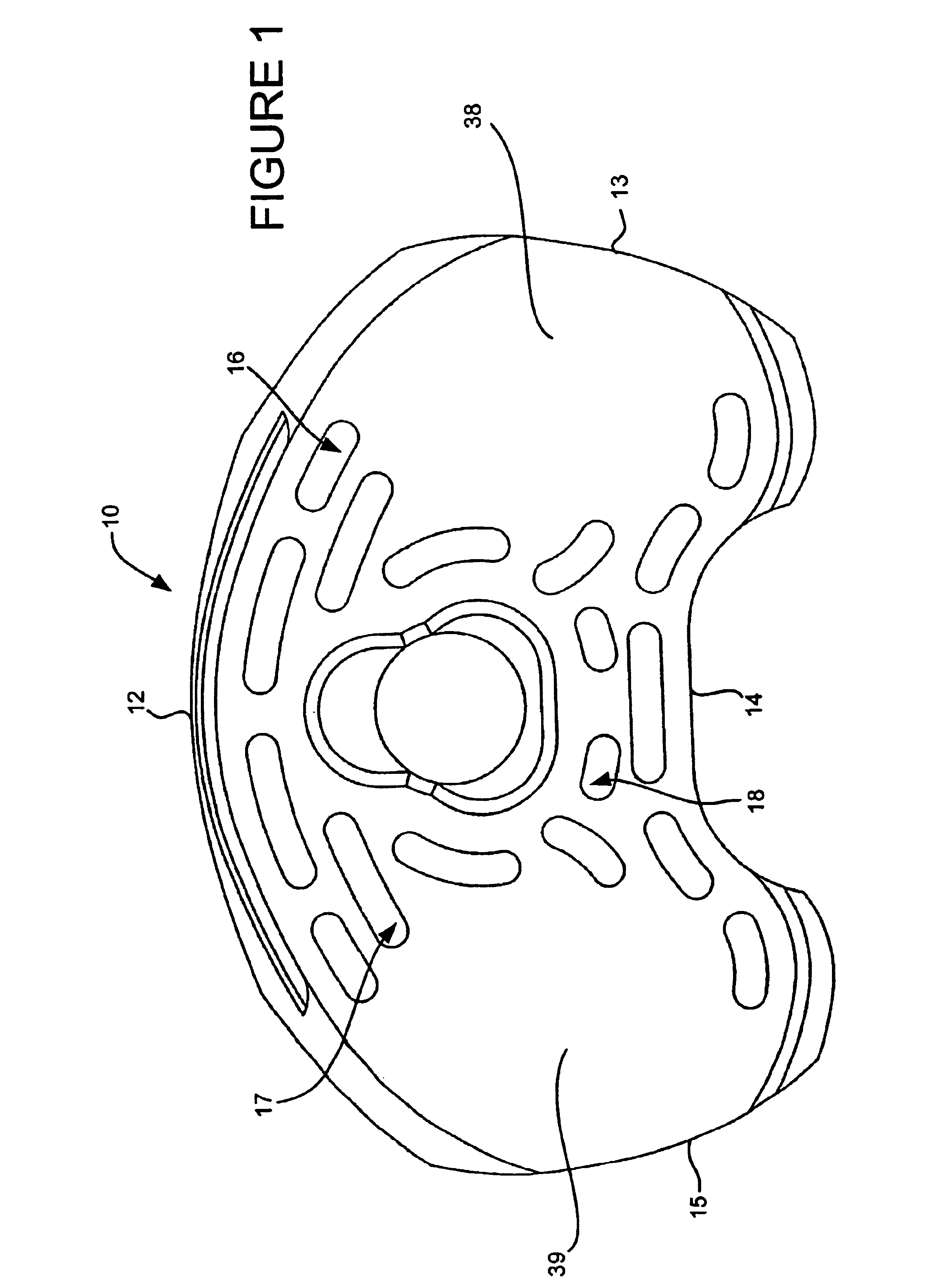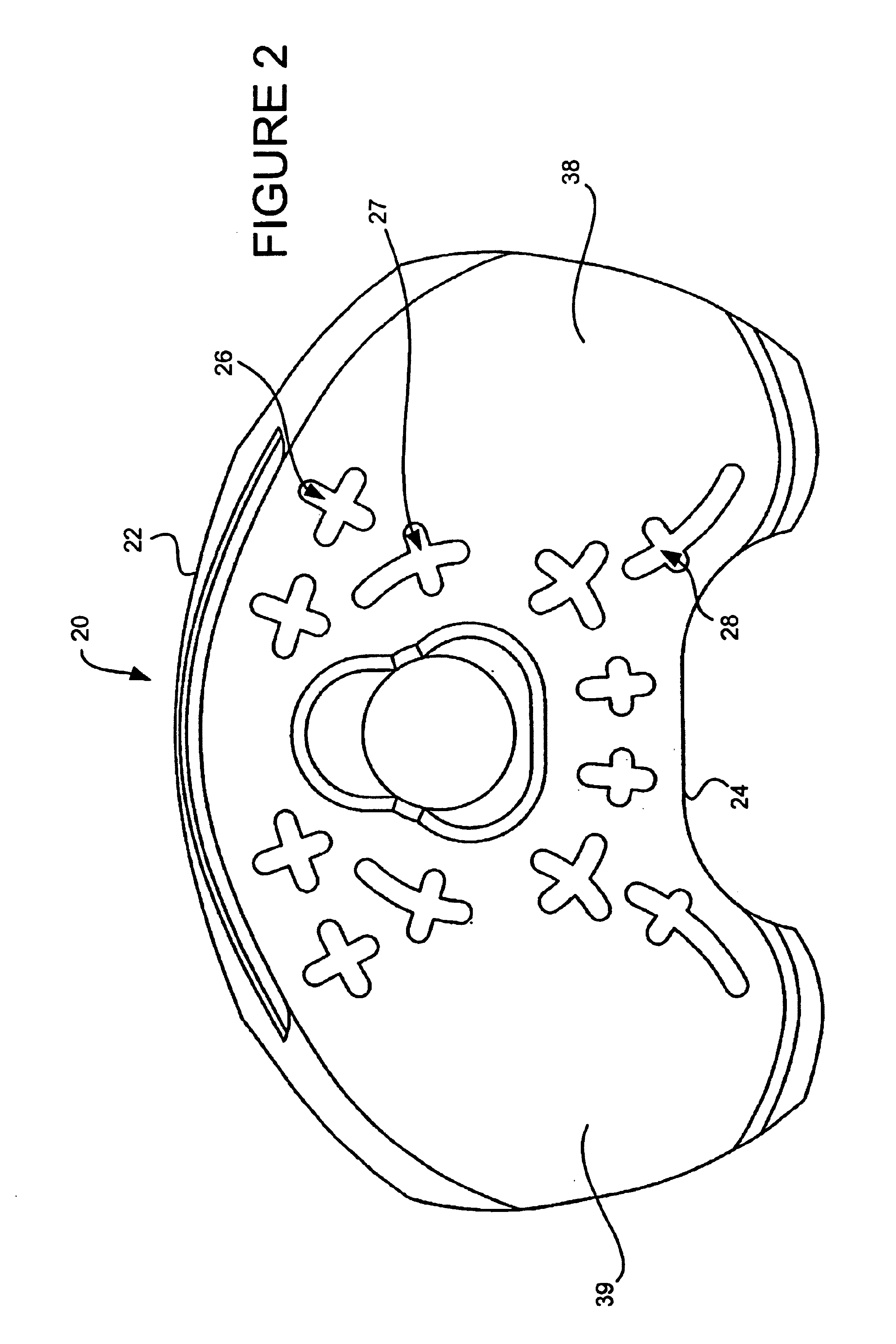Surfaces and processes for wear reducing in orthopaedic implants
a technology for orthopaedic implants and surfaces, applied in the field of surfaces and processes for reducing friction and wear of orthopaedic implant components, can solve the problems of high wear rate that occurs once the components are installed, increased replacement and revision, and traumatic to surrounding tissue and bone, so as to improve lubricant access and reduce wear ra
- Summary
- Abstract
- Description
- Claims
- Application Information
AI Technical Summary
Benefits of technology
Problems solved by technology
Method used
Image
Examples
Embodiment Construction
Standard mobile bearing inserts (MBK-1) with various underside reduced-area patterns were prepared. The selection of patterns was based on the following criteria:
machining feasibility;
maximum removal of material with minimum effect on integrity;
maintain a minimum distance between holes or slots;
remove no more than 2 mm depth of material; and
avoid holes or slots within 2 mm of edge or directly under center of tibial plateaus (to maintain 6 mm thickness).
Although the patterns were selected using the above criteria, the listed criteria is not critical, and any other possible patterns that could have been chosen are within the spirit and scope of this invention. As discussed, the primary goal is to reduce surface area.
Patterns with crosses (X), slots (S), and holes (C), and were conceived and are shown in FIGS. 1-4. The proportions shown are relatively accurate to those used, although they may be varied in actual practice as necessary. The reduction in underside area for each of these s...
PUM
 Login to View More
Login to View More Abstract
Description
Claims
Application Information
 Login to View More
Login to View More - R&D
- Intellectual Property
- Life Sciences
- Materials
- Tech Scout
- Unparalleled Data Quality
- Higher Quality Content
- 60% Fewer Hallucinations
Browse by: Latest US Patents, China's latest patents, Technical Efficacy Thesaurus, Application Domain, Technology Topic, Popular Technical Reports.
© 2025 PatSnap. All rights reserved.Legal|Privacy policy|Modern Slavery Act Transparency Statement|Sitemap|About US| Contact US: help@patsnap.com



